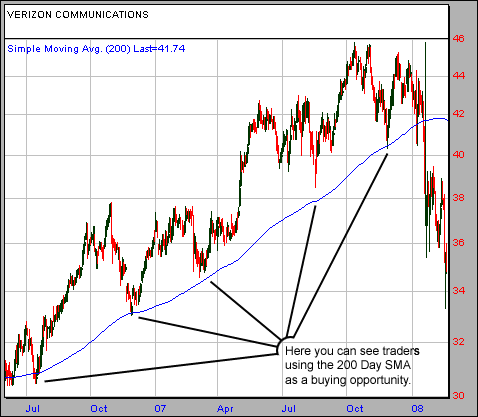The Simple Moving Average or SMA is probably the most commonly used technical indicator of all. It can be calculated by taking the average of a data series (usually the close price) over a set number of periods. As each period progresses the last value is dropped out of the calculation and the latest one takes its place; hence the ‘Moving’ characteristic.
Financial data is notorious for being full of noise. Smoothing methods like averages help to filter out some of that noise so that a clearer picture of what is really going on can be revealed. Test results show however the Simple Moving Average is certainly not the most effective smoothing method available. Why then do we use the SMA in the weekly ETF HQ Report?
Some Simple Moving Averages such as the 50, 100 and 200 day SMA are so widely followed that they regularly become important support and resistance levels. There is no reason why this should happen other than the fact that they have become a self fulfilling prophecy. If enough people think that a level is important then it becomes important:
.
 .
.
Above is an example the 200 day SMA acting as support and being seen as a buying opportunity for over a year. With so many points of inflection on this average the eventual break was viewed by traders as a significant technical failure and a flood of selling ensued.
For those of you who use Excel in your trading I have built a spreadsheet for you that contains a simple moving average. You are probably wondering why you would want to download such a simple indicator but this one is useful because it will automatically adjust to the length that you specify. We find this a useful feature and hopefully you will as well. Get the file at the following link near the bottom of the page under Downloads – Technical Indicators: Simple Moving Average (SMA). Please let us know if you find it useful.
.
Moving Average Test Results
.
Have you ever wondered which is better; a simple or exponential moving average? Well we tested both along with a double exponential moving average through 300 years of data across 16 global markets to reveal the answer. Here are the results – Simple vs. Exponential Moving Average
.